2024-05-02
Our purpose is to furnish you with an exhaustive Iran logistics compendium alongside all requisite details concerning the importation process, shipping costs and time from China to Iran, encompassing international shipping protocols.
Iran's strategic location and extensive transportation network make it a key player in regional logistics. The country's vast land and sea borders and proximity to 13 countries facilitate trade and transportation activities. Iran has access to the high seas and is the gateway to many Middle Eastern countries. Iran's logistics industry is also one of the critical pillars of the country's economic development. Iran's logistics network connects the East and the West through various land, sea, rail, and air transportation modes, supporting domestic and international cargo transportation and supply chains.
Iran is located along several international transit and trade corridors, including the International North-South Transport Corridor ( INSTC), the Europe-Caucasus-Asia Transport Corridor (TRACECA), the International East-West Transport Corridor (IEWTC), the South Asia Corridor, and the Asian Land Transport Infrastructure Development Corporation (ALTID). These corridors enhance Iran's connectivity to various regions and contribute to its role as a logistics hub in the Middle East. Let's dive into iran logistics.
| Quote for Iran logistics shipping from China |
| Whatsapp - Online Customer Service |

Iran's logistics transportation process usually involves multiple transportation methods and procedures. The following is a general overview of Iran's international logistics shipping process:
1. Goods preparation and packaging The goods must be prepared and packed before starting the international logistics transportation process. Ensure that the goods are well packaged and comply with transportation standards and requirements to ensure the safety of the goods during transportation.
2. Choose shipping method Sea Freight: Sea shipping is a standard option for long distances and bulk cargo. Goods are usually imported and exported through seaports and require corresponding customs procedures and documents. Land transportation: Land transportation is usually used to transport goods to neighboring countries or regions. Goods can be transported by truck or rail. Air freight: For goods that urgently need to be delivered quickly, air freight is a fast and efficient option. Goods are transported through airlines and must comply with the airline's regulations and requirements.
3. Customs procedures Import and export goods need to go through customs clearance procedures. This includes filling in necessary import and export declaration documents and paying duties and other fees.
4. Track and monitor shipments Tracking and monitoring the location and status of your cargo throughout the entire shipping process is crucial. Logistics companies often offer tracking services that let customers know their goods' location and estimated arrival time in real time.
5. Delivery and signature When the goods arrive at the destination, the recipient needs to sign and confirm the goods. Make sure the goods are in good condition and complete the necessary documentation.
Tips: Cooperate with freight forwarders like Jikeship In international logistics transportation, logistics companies usually provide services. Freight forwarding companies can provide cargo transportation, customs clearance, warehousing, and other services to help goods reach their destination smoothly.
Communication and coordination between partners are crucial throughout the international logistics transportation process. Ensuring compliance with relevant laws and regulations and choosing a reliable logistics partner will help to complete the international transportation of goods.
Customs clearance in Iran logistics refers to the customs clearance procedures that goods must undergo when importing and exporting. Passing customs in Iran can indeed present some challenges. For some projects, you may need four or five different licenses from different organizations, making the entire process complex and expensive.
Many cumbersome rules and regulations can cause problems for Iranian merchants, who must spend a lot of money to get their items through Iranian customs.
But the good news is that Iran has many large seaports and international airports so that you can bring items into the country and through customs. These seaports and airports offer a variety of ways to choose the most suitable channel for transporting goods while also providing merchants with more flexibility and possibilities.
When faced with complex regulations, the most important thing is to remain patient and cautious and make appropriate plans and arrangements based on the specific situation to ensure smooth passage through the entire customs process.
Should you intend to initiate the customs clearance procedure in Iran and embark on shipping a parcel from China to Iran, a plethora of documents must be diligently arranged and readied.
Here we tell you the primary documents required to start the customs clearance process in Iran: Commercial ID, Delivery Order, Warehouse Receipt, Bill of Lading, Packing List, Proforma Invoice, Certificate of Origin, Standard Certificate, Registration Order, Logical License.
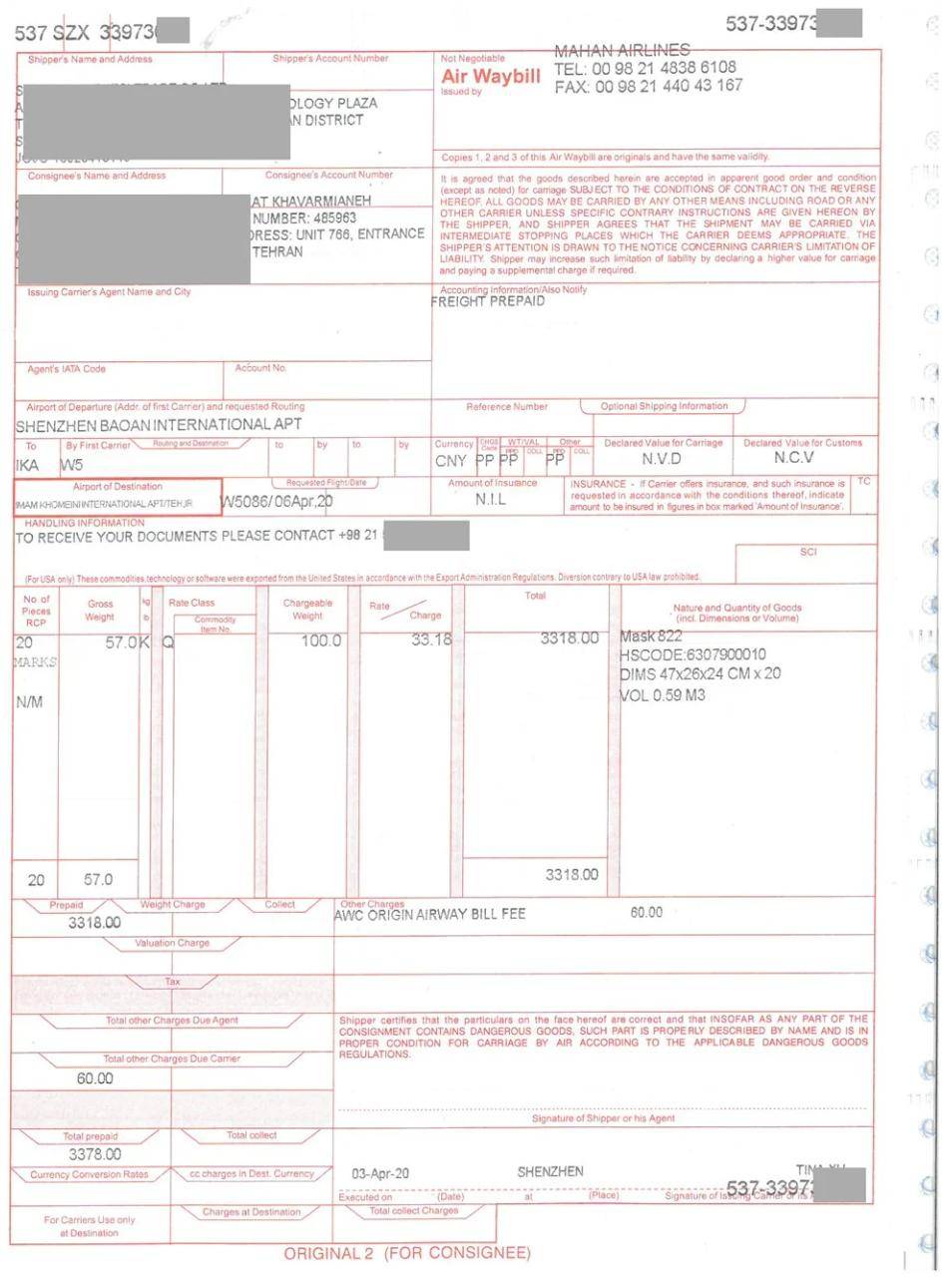
A Bill of Lading is a legal document issued by the carrier to the shipper as a cargo transportation contract. When a Chinese company exports its products across the globe via sea or air freight, the shipping terms are agreed upon by three stakeholders: the supplier, the shipping company, and the recipient. The Bill of Lading is considered the receipt and title document for goods transportation services. In addition, it can also be used as proof of the transportation contract signed between the carrier and the exporter.
The Bill of Lading furnishes drivers and carriers with all indispensable information essential for the facilitation of freight processing.
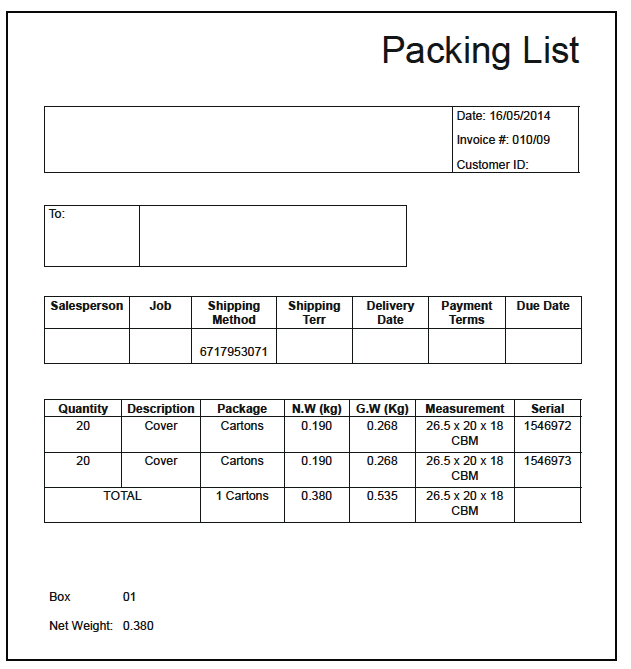 The packing list contains a detailed list of the goods and is intended to supplement the commercial invoice and assist customs in identifying and monitoring the goods. If you plan to clear customs in Iran, it is crucial to obtain a packing list. You can request this document from the seller.
The packing list contains a detailed list of the goods and is intended to supplement the commercial invoice and assist customs in identifying and monitoring the goods. If you plan to clear customs in Iran, it is crucial to obtain a packing list. You can request this document from the seller.
In the packing list, describe all shipments, including separate entries detailing the contents and weight of each box. This document is essential for the official import of goods into Iran.
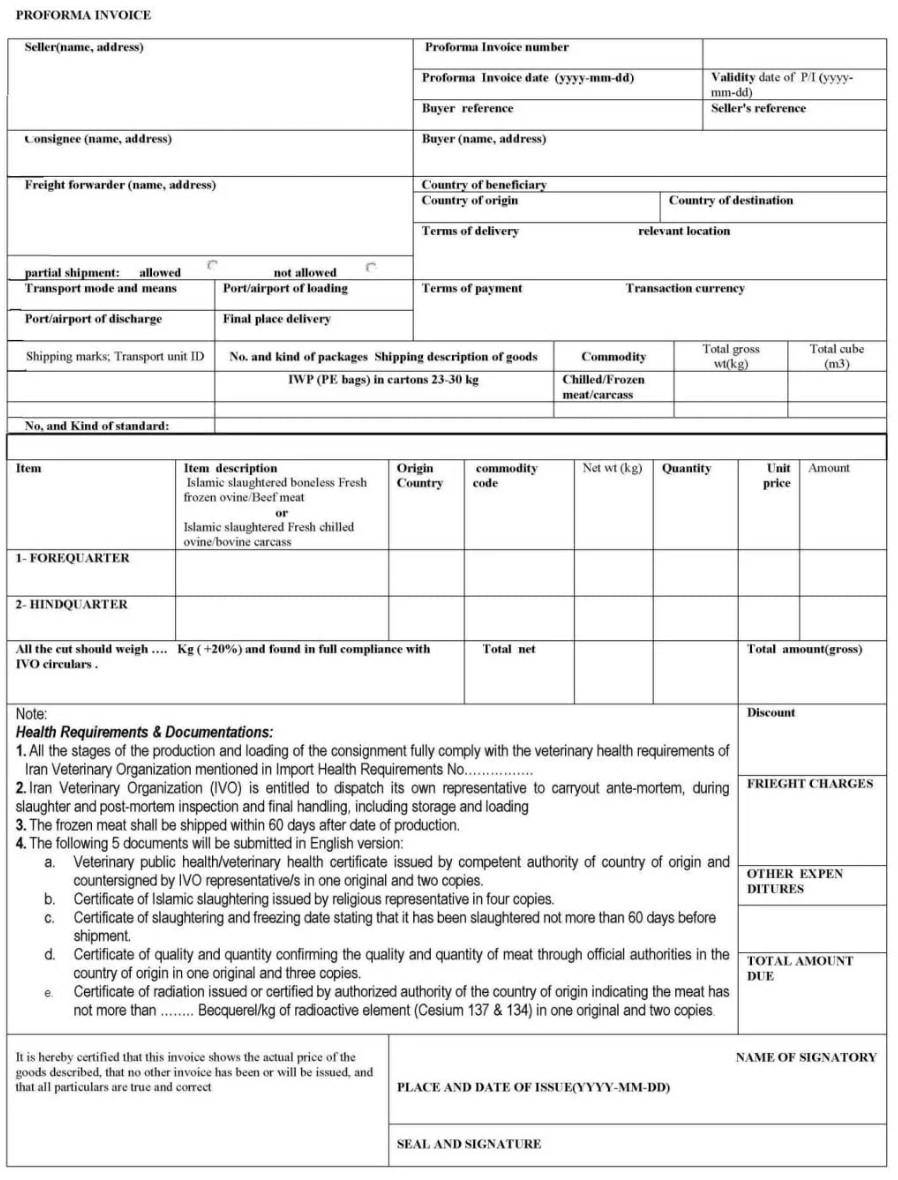 This document is the document that officially transfers ownership of the goods to the buyer. A commercial or proforma invoice is essential for all shipments subject to tax in the destination country.
This document is the document that officially transfers ownership of the goods to the buyer. A commercial or proforma invoice is essential for all shipments subject to tax in the destination country.
It would help if you got a pro forma invoice when you buy any product from any seller. Commercial invoices should contain the necessary information, as below: • Importer's tax number; • Complete delineation and Harmonized System Code (HS); • Goods unit cost, quantity, and currency • Applicable INCOTERM (DDP/DDU/EXW); • Exporter identification is required.
A Certificate of Origin ( CO) is a unique document that states the origin of a product. Different countries have different rules on when this document is required.
Why some countries require a certificate of origin: In some places, they need to know where the product is made. This documentation may be required for all products or specific products.
How to obtain a certificate of origin: Sometimes, you don't need cumbersome certificates and can indicate the source of the product on your company documents. However, if an official certificate is required, it can usually be obtained from an organization such as the local chamber of commerce.
Where to obtain a certificate of origin: You can obtain a certificate of origin from the factory where the product was made or from the party where the product was sold.
Standard certificate This document is issued by the Iranian Standards and Quality Inspection Company, and this company will inspect all goods after the goods arrive at Iranian customs. To pass inspection, all products must meet the standards and quality inspection company's standards. You can use a private inspection agency with Iranian standards and quality inspection company qualifications.
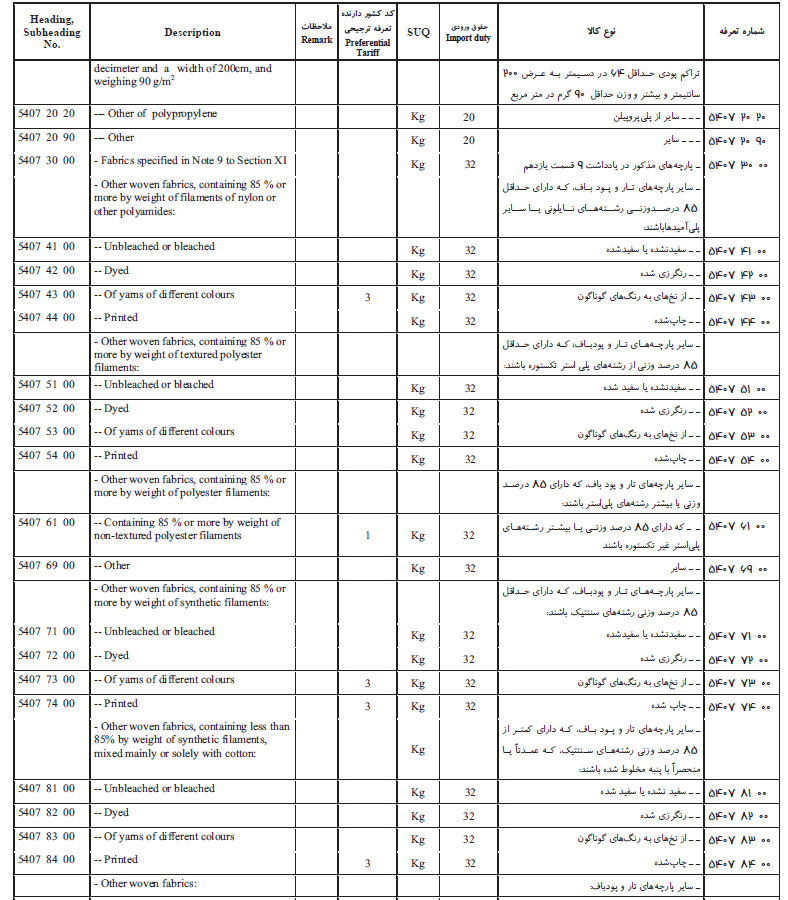 If you plan to import any goods into Iran, you must declare them to customs before shipping them.
If you plan to import any goods into Iran, you must declare them to customs before shipping them.
Iran Customs provides an online platform for this process, known as the new system. Every person or entity wishing to import goods into Iran must submit all shipping documents and product information on the new website.
Depending on the type of product you plan to import, multiple licenses or permits may be required to introduce goods into Iran. These licenses are usually intended to ensure imported products' safety, quality, and compliance with Iranian regulatory requirements.
Types of licenses and permits in Iran logistics include:
Import licenses and order registrations are sometimes sufficient to clear customs for imported goods, avoiding separate applications for multiple licenses.
Other requirements may include health certificates, phytosanitary licenses, standards certificates, etc. To ensure product quality, these certifications may require inspections and sampling at the point of origin or upon arrival at the destination.
Importers should ensure that imported products meet standards, include them in procurement contracts and import registration documents, and require suppliers to ensure that goods meet these standards.
Failure to comply with prescribed standards may result in the seizure of import licenses. To summarize, this "permission" refers to the various licenses and permits required to import goods into Iran to ensure that the products meet the safety, quality, and regulatory standards set by the Iranian authorities.
In Iran logistics, customs usually use a green, yellow, and red system to classify and regulate goods. These systems often indicate the risk level of cargo and the further handling required. Iran's customs clearance department will check your request and documents to see if everything is OK. Your stuff can enter Iran if you follow the regulations of the department and country.
Once approved, they will provide a unique number for your package. This number helps them track your items. Depending on the condition of your shipment, you will need to choose a color to understand the following steps: o Red: If you choose red, a certified person will carefully check your package and all the documents you have. o Yellow: If you select Yellow, they will double-check all your documents to ensure they match what was delivered. o Green: But if you choose green, your package will skip all additional checks and go straight to the final step of the customs clearance process. It's like taking the express lane!
Iranian customs processing of goods transactions usually involves various fees. These charges may vary based on factors such as the type of goods, value, quantity, and country of import and export. Here are some standard fees that may be involved:
The specific amount of the fee will vary depending on the nature and value of the goods and the particular requirements of the import procedure. Before importing goods, importers must consult local customs or relevant agencies to understand all applicable fees and be fully prepared.
| Get a free quote from China |
| Whatsapp - Online Customer Service |
The applicable tariffs and rules are determined for each product based on its specific classification and coding (usually, the internationally accepted HS code is used ). The internationally accepted HS coding system is a standard method for classifying goods so customs and other agencies in various countries can identify and classify goods uniformly.
According to different HS codes and product categories, Iran Customs will formulate different tariff rates and rules. Importers need to determine the applicable tariff rate based on the HS code and product description of the goods they import to ensure that they comply with relevant regulations when importing goods.
Usually, importers can learn more about the specific product's HS code and applicable tariff rate with Iran Customs. This helps them accurately understand the amount of tariffs they need to pay for imported goods and make relevant preparations in advance.
Therefore, when importers prepare to import goods from China to Iran, they should understand the HS codes of their products and consult Iranian customs or relevant agencies before importing to obtain detailed information on applicable tariffs and rules. This can avoid unnecessary trouble or expenses caused by customs duties.
Iran Customs has implemented clear classifications and regulations for imported and exported products. The following is a brief description of these three categories of products.
Allowed goods: These goods can be freely exported or imported without a license if they meet relevant standards. Such goods are usually products that comply with Iranian laws and standards, comply with import and export regulations, and carry out trade activities smoothly.
Conditional items: These goods require a license to be exported or imported. Obtaining a permit may be subject to certain conditions or standards. Such goods may belong to specific sensitive fields or products that require special approval and must be reviewed and approved by relevant departments before they can be imported or exported.
Contraband: The export or import of these goods is strictly prohibited under Iranian law and Sharia law. Prohibited items may include products that conflict with Iranian laws or religious beliefs and are prohibited from purchase, sale, or consumption.
Before importing goods from China to Iran, importers should carefully check their product types and make sure they understand the classification and regulations of these three categories of goods. These regulations are usually formulated by Iran's Ministry of Industry and approved by the Council of Ministers of Mines and Trade. Importers should comply with relevant laws and regulations to ensure their goods comply with Iran's import and export requirements to avoid possible problems or violations.
Iran Prohibited and Restricted Items
As a Muslim country, Iran logistics, like other Muslim countries, has many prohibitions and restrictions on the import and export of items. We recommend reviewing the following checklist before considering any business dealings with Iran.
According to the rules and regulations of Iran, several goods are prohibited from import and export, including but not limited to:
Prohibited items (forbidden to be carried):
Restricted items:
Certain goods' imports and exports are prohibited under Iran's rules and regulations. Here are some of those items:
Importing goods into Iran is a highly sought-after business and is mainly operated through Iran's top seaports. In Persian, "Bandar" corresponds to "seaport" in English.
Port of Bandar Abbas (Sharhid Rajaee Port): As part of Bandar Abbas Port, it is Iran's main seaport, handling 55% of the country's maritime cargo transactions. Ranked 59th in the world's busiest ports in 2013.
Port of Bushehr: The port is located in Bushehr Province, the capital and largest city of the Islamic Republic of Iran, on the Persian Gulf coast, and is one of the country's major port cities.
Port of Bandar Khomeini: Also known as Imam Port, a port city on the Persian Gulf coast in Khuzestan Province, Islamic Republic of Iran, which is a trans-shipment port for containers, cargo tanks and general cargoes.
The trade volume between China and Iran has been significant in recent years. In 2023, the bilateral import and export volume of goods between China and Iran was US$14,657,241,500. Here are some critical points on China-Iran trade:
Trade volume: China is one of Iran's major trading partners, with bilateral trade volume reaching billions annually.
Bulk commodities: China to Iran trade involves many commodities, including petroleum, petrochemicals, machinery, electronics, textiles, etc.
Investment: China has invested in Iran's infrastructure, energy, telecommunications and other fields. The Belt and Road Initiative has also promoted closer economic ties between the two countries.
Challenges: Sanctions on Iran have affected trade relations with China, leading to volatile trade patterns and financial transaction challenges.
Future Outlook: Despite the challenges faced, China and Iran continue to explore cooperation opportunities in various fields to strengthen economic ties and mutual benefit.
When engaging in trade activities between China and Iran, companies must stay abreast of regulations, tariffs, customs procedures, and any geopolitical developments that may affect the trade relationship between the two countries. Furthermore, leveraging existing logistics infrastructure and trade corridors can improve the efficiency and effectiveness of trade operations between China and Iran.
Air freight from China to Iran is a popular option when shipping goods from China to Iran. Many flights from China to Iran are dedicated to transporting cargo daily and ensuring timely and reliable delivery.
If your package weighs more than 30kg or is of high value, or you prioritize time-saving shipping solutions, we strongly recommend air freight services from China to Iran. Significantly, air freight services are esteemed for their robust security measures, rendering them among the most reliable means of shipment to Iran.
While air freight costs more than sea freight, its advantage is fast delivery. You can expect to receive your shipment in Iran in just 3 days. When time is of the essence, trust the efficiency and reliability of air freight from China to Iran.
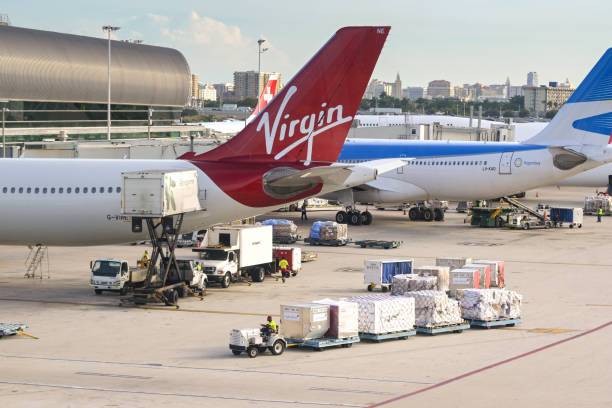
Air freight services connecting China and Iran play a pivotal role in fostering commerce by virtue of their dependability and effectiveness. According to the China and Developing Countries Handbook, although the number of international airports in Iran is limited, these transactions mainly occur at Iran's five major international airports:
| Airport | Place | Role in trade | Airline |
|---|---|---|---|
| Tehran ( Imam Khomeini ) | Capital province | As Iran's capital and highly developed region, Tehran is the preferred destination for importers. Imam Khomeini Airport is one of Tehran's largest airports. It serves as a hub for more than 40 international airlines, making it particularly convenient for delivering cargo to towns in northern Iran. | Various international airlines |
| Shiraz | Capital of fars province | Shiraz Shaheed Dastqeb International Airport is an essential link in China-Iran relations and can lead to southern Iran. The airport is a gateway to several provinces, and cargo services are provided by airlines such as Mahan Air, Kish Air, and Qatar Airways. | Mahan Air, Kish Air, Qatar Airways, etc. |
| Mashhad | Northeastern Iran | Mashhad is located in northeastern Iran, connecting Iran with Afghanistan and Armenia, and is home to Shahid Hashiminejad Airport. The city is bordered by numerous provinces, providing cost-effective transportation to nearby areas and far-flung southern regions such as Sistan -Wa- Baluchestan. | Various international airlines |
| Tabriz | northwestern Iran | Shahid Madani International Airport in Tabriz is famous for traders exporting to Iran's northwestern region. It provides logistical access to several important ports, and airlines such as Mahan Air and Kish Air play an important role in cargo transportation. | Mahan Air, Kish Air, etc. |
| Isfahan | Central Iran | Isfahan International Airport is strategically located and has access to nine significant provinces. A total of fourteen operational airlines, such as Mahan Air, Kish Air, and Qatar Airways, function in this area, establishing it as a significant gateway for cargo transportation from China to Iran. | Mahan Air, Kish Air, Qatar Airways, and other airlines |
Major cities in China with direct flights to Iran:
In Iran, several cities have international airports, but only a few are suitable for handling international air cargo from China. These cities include :
Imam Khomeini International Airport is located about 30 kilometers southwest of downtown Tehran and is one of Iran's main gateways for international air cargo. Its modern facilities and strategic location make it an essential hub for freight operations.
Shahid Dastqeb International Airport, located in Shiraz, is an essential airport in southern Iran handling air cargo. It facilitates the movement of goods and goods to and from China and plays a vital role in regional trade activities.
Tabriz International Airport is a vital cargo gateway in northwestern Iran. Its strategic proximity to the Turkish border and sophisticated infrastructure render it an optimal hub for air carriage connecting China and Iran.
These airports are strategically located to handle the influx of air cargo from China, facilitating efficient cargo exchange and boosting trade relations between the two countries. Importers and exporters can rely on these airports for logistics and transportation.
From major cities in China to Iran :
| Transportation time | From China to Tehran Airport | From China to Mashhad Airport | From China to Shiraz Airport | From China to Tabriz Airport |
|---|---|---|---|---|
| From Shanghai Airport | 1-3 days | 3-6 days | 3-6 days | 3-6 days |
| From Shenzhen Airport | 1-3 days | 3-6 days | 3-6 days | 3-6 days |
| From Guangzhou Airport | 1-3 days | 3-6 days | 3-6 days | 3-6 days |
| From Beijing Airport | 1-3 days | 3-6 days | 3-6 days | 3-6 days |
| From Hongkong Airport | 2-4 days | 3-6 days | 3-6 days | 3-6 days |
The airfreight expenses from China to Iran fluctuate on a weekly basis, contingent upon various factors including weight, dimensions, and nature of the cargo. Here, we tell you the average air freight cost from China to Iran.
| From /To | Over 22kg | More than 100kg | More than 500kg | More than 1000kg |
|---|---|---|---|---|
| Air freight from Shenzhen to Tehran | $ 9.5/ kg | $ 7/ kg | $ 5.5/ kg | $ 4/ kg |
| Air freight from Shanghai to Tehran | $ 9/ kg | $ 7/ kg | $ 6.8/ kg | $ 4.1/ kg |
| Air freight from Guangzhou to Tehran | $ 9/ kg | $ 5/ kg | $ 4.8/ kg | $ 3.7/ kg |
| From Beijing to Tehran | $ 9.5/ kg | $ 7/ kg | $ 6.5/ kg | $ 5/ kg |
| Air freight from Hong Kong to Tehran | $ 9/ kg | $ 8/ kg | $ 7.5/ kg | $6/ kg |
| Get the latest shipping price quotes from China to Iran |
Iran is a vast country and ranks second in the Middle East after Saudi Arabia. At the same time, it is also a sizeable maritime country, bordering the Caspian Sea to the north and facing the Persian Gulf and the Gulf of Oman to the south. Despite the sanctions, Iran remains a strong economy and market with a population of 82 million, a human development index, and a large consumer middle class.
Most goods imported from other regions enter through Iran's northern and southern seaports, providing important channels for Iran's import and export trade. While Iran's port infrastructure may be smaller, it is sufficient in number and well-designed and maintained. As essential hubs of the economy, these ports play a crucial role in promoting trade between Iran and international markets.
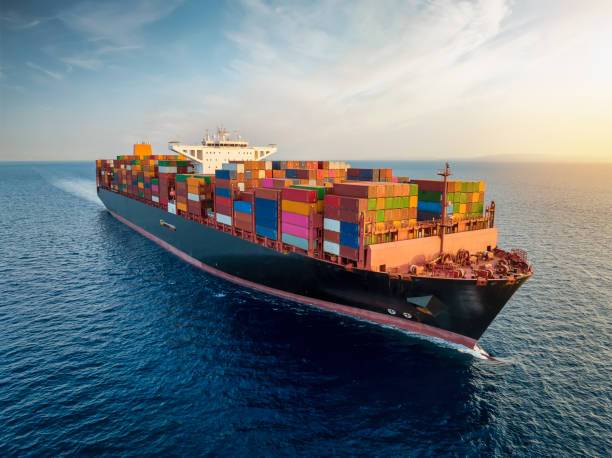
Iran has many famous large seaports that are vital in promoting maritime transportation from China to Iran.
These seaports handle thousands of import and export containers daily, making them key hubs for international trade.
Shipping and delivery times for sea freight services from China to Iran are determined by several factors, including: • Choose FCL or LCL service: If you choose FCL service, goods can often arrive at their destination faster because FCL service does not require waiting for other goods to fill the container. Choosing LCL service will extend the transportation time because you need to wait for the container to be complete. • Departure port: Which port you choose to depart from in China will also affect shipping time. The distance between different ports and transportation routes will impact the transit time of goods. • Destination port: The location and busyness of the destination port can also affect the delivery time of your cargo. Some significant ports may have greater efficiency and faster loading and unloading speeds, shortening the shipping process. • Use drop shipping service or transshipment service: Choosing a drop shipping service can reduce the number of transshipments of goods in transit, thus shortening the overall transportation time. Using a transshipment service may increase transit time because the goods need to wait at intermediate stations for transshipment.
But to check the shipping time from significant seaports in China to Iran, you can refer to the table below:
| From /To | Bandar Abbas | Bushehr | Imam khomeini | khorramshahr |
|---|---|---|---|---|
| Shanghai | 35 days | 30 days | 35 days | 25 days |
| Shenzhen | 30 days | 30 days | 25 days | 30 days |
| Ningbo | 25 days | 32 days | 30 days | 40 days |
| Guangzhou | 30 days | 35 days | 30 days | 35 days |
| Hongkong | 30 days | 40 days | 25 days | 30 days |
| Qingdao | 25 days | 25 days | 30 days | 35 days |
| Tianjin | 25 days | 35 days | 30 days | 35 days |
| Xiamen | 30 days | 28 days | 25 days | 25 days |
| Dalian | 35 days | 30 days | 35 days | 40 days |
| Dongguan | 25 days | 30 days | 35 days | 30 days |
| Nanjing | 35 days | 30 days | 25 days | 25 days |
The above schedule is for reference only. If you want faster shipping, there are fast ships from Shenzhen to Abbas port that can take 13 days to the destination port.
Rapid changes in ocean freight rates and air freight costs are affected by many factors, including but not limited to: • Size and volume of goods: The size and weight of goods will directly affect the transportation cost. Larger or heavier shipments usually result in higher shipping charges. • Container type: Different types of containers have different capacities and characteristics, and choosing different types of containers will affect transportation costs. • Type of goods and products: The type, nature, and unique requirements of the goods will impact transportation costs. For example, fragile items or special preservation requirements may require additional protective measures, thereby increasing shipping costs. • Port of departure and port of destination: Which port in China to which port in Iran will also affect the transportation cost. The distance between ports, channel conditions, and supply and demand relationships will all impact the final freight rate.
For your convenience, we have provided in this table the shipping costs for a container (20 feet) from China to Iran:
| From /To | Bandar Abbas (IRBND) | IRBUZ | Imam Khomeini (IRBKM) | Khorramshahr (Ilho) |
|---|---|---|---|---|
| Shanghai | $2,100 | $2,300 | $2,500 | $2,250 |
| Shenzhen | $1,900 | $2,100 | $2,300 | $2,150 |
| Ningbo | $2,050 | $2,250 | $2,450 | $2,200 |
| Guangzhou | $1,850 | $2,050 | $2,250 | $2,100 |
| Hongkong | $1,950 | $2,150 | $2,350 | $2,200 |
| Qingdao | $2,200 | $2,400 | $2,600 | $2,350 |
| Tianjin | $2,300 | $2,500 | $2,700 | $2,450 |
| Xiamen | $1,950 | $2,150 | $2,350 | $2,200 |
| Dalian | $2,250 | $2,450 | $2,650 | $2,400 |
| Dongguan | $1,850 | $2,050 | $2,250 | $2,100 |
| Nanjing | $2,050 | $2,250 | $2,450 | $2,200 |
| Beijing | $2,300 | $2,500 | $2,700 | $2,450 |
| Hangzhou | $2,100 | $2,300 | $2,500 | $2,250 |
| Wuhan | $2,150 | $2,350 | $2,550 | $2,300 |
| Chengdu | $2,400 | $2,600 | $2,800 | $2,550 |
| Changsha | $2,350 | $2,550 | $2,750 | $2,500 |
| Suzhou | $2,050 | $2,250 | $2,450 | $2,200 |
| Chongqing | $2,400 | $2,600 | $2,800 | $2,550 |
| Get the latest shipping price quotes from China to Iran |
Express shipping is often one of the best options for sending small parcels and documents, especially those weighing under 20 kilograms. If you plan to send this shipment from China to Iran, express shipping is often convenient.
The services provided by express companies are usually very fast. Still, the price may be high, and customs clearance fees are generally not included in the destination country (such as Iran). Therefore, before choosing to use express delivery services, it is recommended that you understand the relevant fees and terms in advance to avoid unnecessary trouble.
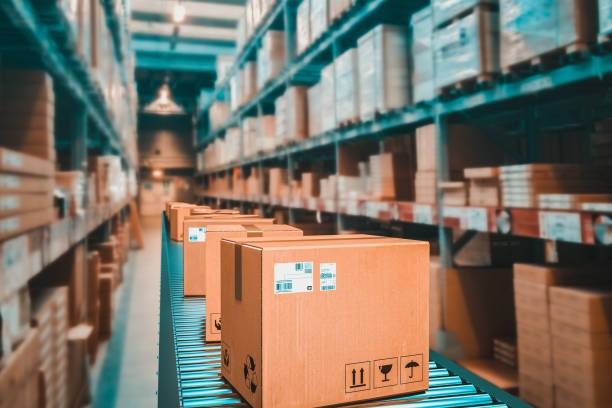
Many international brands have emerged in the express delivery service market between China and Iran, which provide essential guarantees for efficient cargo transportation. Here are several major global express companies that play an important role in shipping between China and Iran:
PDE Express: PDE Express is a well-known express brand that provides express delivery services from China to Iran. They are known for being efficient and fast, but shipping costs can be relatively high, especially for packages weighing under 5kg.
FNX Shipping: FNX SHIPPING enjoys a good reputation in both Iran and China, specializing in handling heavier packages and providing high-quality express services. They are a reliable shipping option known for their competitive pricing and professional customer support system.
PSP Express: PSP Express is a relatively new express company that provides cost-effective shipping services. However, it should be noted that they may charge high customs clearance fees in Iran logistics, especially for goods with a declared value of more than $50.
BRE EXPRES: Bre Line, also known as BRE EXPRESS, has a particular history in the industry, although its influence in China may be low. They offer affordable shipping, but you may need some delays and higher customs clearance fees in Iran.
EMS: EMS is a state-owned postal service with relatively affordable prices and is suitable for sending packages weighing no more than 3 kilograms from China to Iran. In addition, using EMS makes it easy to track the package until it is delivered to the Iranian address.
Before choosing a suitable express delivery company, be sure to fully understand each company's service details, prices, and customs clearance policies to ensure that your goods are delivered to their destination safely and on time. Pay attention to customs regulations and the latest requirements to avoid potential problems and get your package delivered smoothly.
Shipping time from China to Iran :
| Express Company | Estimated shipping time (working days) |
|---|---|
| PDE Express | Eight days |
| FNX Transport | Seven days |
| PSP Express | Nine days |
| BRE EXPRESS | Eight days |
| EMS | Seven days |
| Quote for Express shipping in Iran Logistics |
What should I do if my shipment is lost or damaged in Iran logistics?
Contact the shipping company or freight forwarder immediately if your goods are lost or damaged. If you purchased insurance for your shipment, they will instruct you on how to file a claim.
How much does airfreight cost to ship from China to Iran?
The cost of air freight from China to Iran depends on many factors and may vary from week to week. The cost depends on several factors: shipment weight, size, and shipping type. The fees will vary depending on the city of departure in China. You can check the price table in the above article. For the latest pricing information, please get in touch with us directly.
Which cities in Iran can accept air cargo shipping from China?
Cities in Iran that receive air cargo from China include Tehran, Mashhad, Shiraz, and Tabriz. These cities have international airports that handle international flights and cargo.
| Get a free quote from China |
| Whatsapp - Online Customer Service |

Here we list the top 8 freight forwarder companies in Iran. You can ask them for quotes and compare services. Hope it helps you choose the best freight forwarder in Iran.
2024-03-21

We show you details of the main Iranian Ports. Optimize your supply chain with reliable and timely sea freight services to Iran Ports with professional freight forwarders.
2024-03-28
We use third-party cookies in order to personalise your experience.
Read our cookie policy